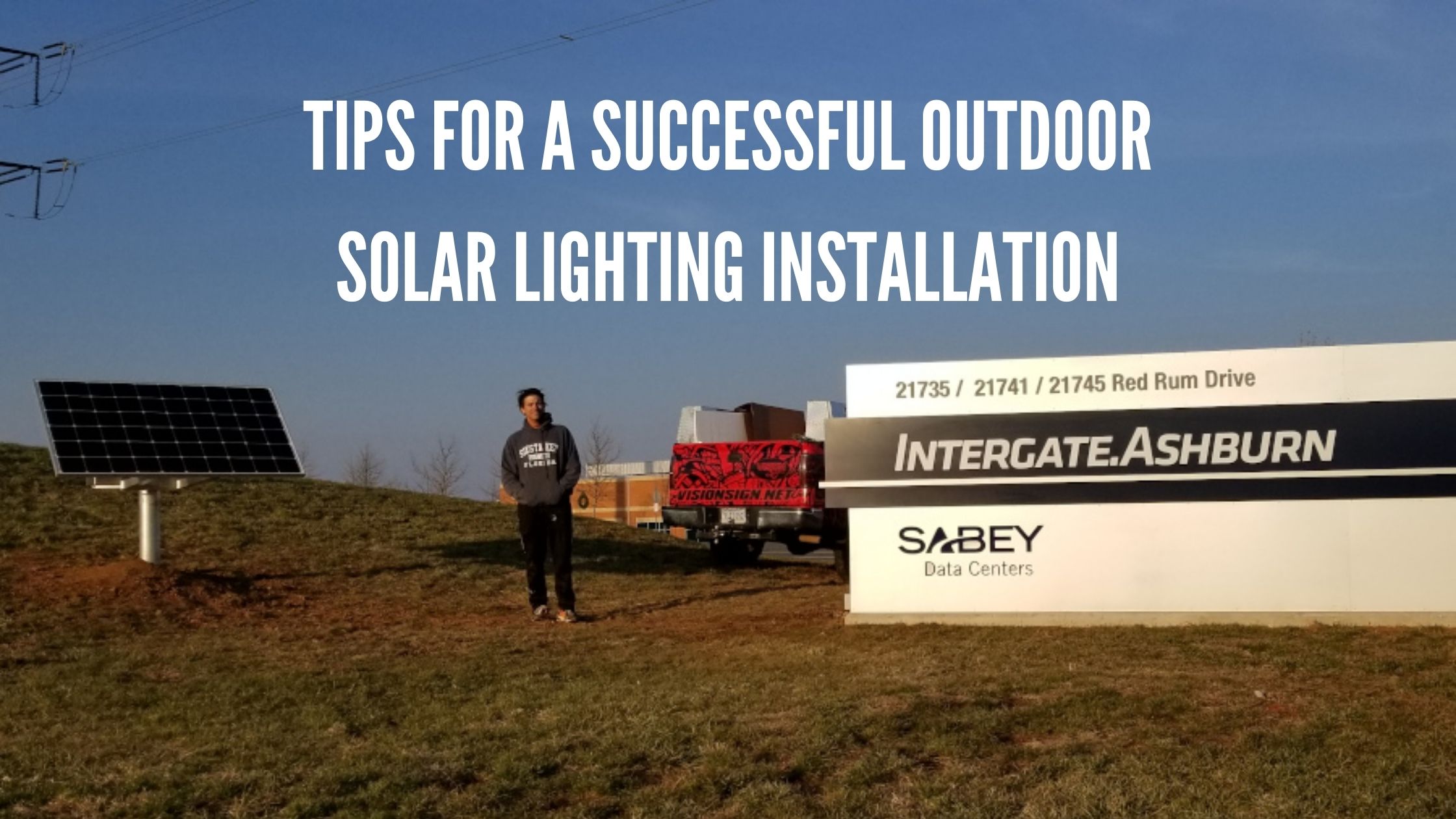With the recent trends to go green, there are more and more government and institution outdoor solar lighting installations being undertaken. How do you know if you've got everything as it should be to install your outdoor solar lighting? Reading the installation instructions is a great place to start, and we wanted to take it one step further. Here are some tips on what to consider so that your outdoor solar lighting installation goes smoothly:
Do you have the appropriate building permits in place?
Building permits are more than just an inspection on the safety of your installation itself; it also deals with the systems it is interconnected to, such as whether the framing on your structure is robust enough to handle the weight of your outdoor solar lighting equipment, whether the electrical lines running between your panels, charge controller and light fixtures are installed safely and whether the installation will meet your local codes. By checking with your local building inspector, you can find out if there are any unique permit requirements that you are not otherwise aware of. Not all cities and counties require permits on low voltage 12 or 24 VDC systems, but checking before the installation process begins will give you a great place to start, even before the system is shipped to you.
What is the minimum amount of sun you get daily during the year?
Getting beautiful, sunny days all summer long doesn't mean that your system will work well in the winter! Usually, during the winter months in the U.S., the minimum daily sunlight will affect how many solar panels you'll need to power your installation. From under two hours daily in the northern U.S. to over four in the southwestern U.S., the number of hours your panels can effectively work under will determine how much power can be provided during the shortest days and longest nights every year.
If you're on the short end of that range, we can help you develop a customized solution. Ensuring the system purchased is made specifically to operate the way you need it to by providing a custom-sized solution will always prove more effective than purchasing a system online that is a "one size fits all" solution. These may give you some guidelines, but they cannot guarantee the life or operation of the system, the system's maintenance needs, or provide much of a warranty.
Is there excessive dust, snowfall, or trees at your project's location?
Though most panels are somewhat self-cleaning because of rain or because the angle the panels are at allows snow to slide off, excessive dust or snowfall can block sunlight and severely limit the amount of power your system can produce. Additional cleaning or maintenance may be required to keep your system functioning at peak performance, which will be safer and easier if the installation is more easily accessible using a shorter structure or pole-mounted system.
Similarly, large shade trees can also prevent sunlight from reaching the panels in a simple setup, especially evergreens. Any amount of shade on your solar panels does not allow them to function as intended. Instead, the panels must have full exposure to the sun from morning to evening.
If your project site has issues that may cause dust, snow, or shading problems, let your solar specialist know. We're more than happy to help you find a customized solution for your project. By considering your answers to these questions, you'll have dodged the biggest problems that can come up in outdoor solar lighting installations. Thinking ahead and giving careful thought to all the steps of your installation and the future use of your lighting will greatly help the process go as smoothly as possible.
Another thing to look at is to determine the ROI on your solar lighting project. This is done by calculating the amount of the overall project, including installation, wiring, and energy costs over the life of a solar lighting system. Many solar lights have an ROI of 3-7 years, where some can be quicker and others may take longer. In most cases, we have seen where the solar light will pay for itself.


